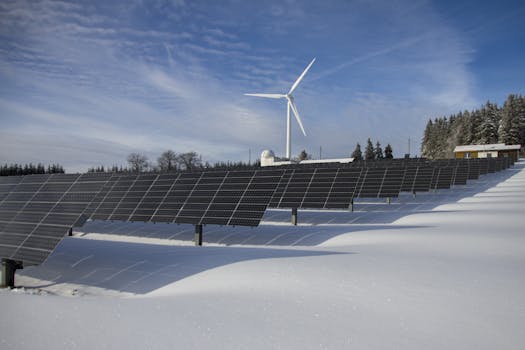Everything You Need to Know About the Maintenance and Service of Photovoltaic Panels
Photovoltaic (PV) panels, commonly known as solar panels, have become a cornerstone of renewable energy solutions worldwide. As the demand for clean energy continues to rise, understanding the maintenance and service of these systems is crucial for maximizing their efficiency and lifespan. This article delves into the essential aspects of maintaining photovoltaic panels, ensuring they operate at peak performance.
The Importance of Maintenance
Regular maintenance of photovoltaic panels is vital for several reasons:
- Efficiency: Clean and well-maintained panels can operate at optimal efficiency, converting sunlight into electricity effectively.
- Longevity: Proper care can extend the lifespan of the panels, which typically last 25 years or more.
- Cost Savings: By ensuring panels function efficiently, homeowners and businesses can save significantly on energy costs.
- Warranty Protection: Many manufacturers require regular maintenance to uphold warranty agreements.
Common Issues with Photovoltaic Panels
Understanding potential issues can help in proactive maintenance. Here are some common problems that can affect PV panels:
- Soiling: Dust, dirt, and debris can accumulate on the surface, blocking sunlight and reducing efficiency.
- Shading: Nearby trees or buildings can cast shadows on panels, significantly impacting their performance.
- Wear and Tear: Over time, components such as inverters and wiring may degrade, necessitating replacement.
- Bird Droppings: Accumulation of droppings can lead to corrosion and other damage if not cleaned regularly.
Maintenance Best Practices
To ensure photovoltaic panels remain in top condition, consider the following maintenance practices:
- Regular Cleaning: Clean panels at least twice a year, or more frequently in dusty areas. Use a soft brush or sponge with mild soap and water.
- Visual Inspections: Conduct regular visual checks for cracks, discoloration, or loose connections. Look for signs of wear on wiring and inverters.
- Monitor Performance: Use monitoring systems to track energy output. A significant drop in performance may indicate a problem.
- Professional Inspections: Schedule annual inspections with a qualified technician to assess the overall health of the system.
Case Study: Successful Maintenance Practices
A notable example of effective photovoltaic panel maintenance can be seen in the case of a solar farm in California. The facility, which spans over 100 acres, implemented a rigorous maintenance schedule that included:
- Monthly cleaning of panels to remove dust and debris.
- Quarterly inspections by certified technicians to check for electrical issues.
- Utilization of drone technology for aerial inspections, allowing for quick identification of shading and damage.
As a result, the solar farm reported a 15% increase in energy output over two years, demonstrating the impact of diligent maintenance practices.
Statistics on Solar Panel Maintenance
According to a report by the National Renewable Energy Laboratory (NREL), properly maintained solar panels can achieve up to 95% of their rated efficiency. In contrast, poorly maintained systems can see efficiency drop to as low as 70%. This stark difference highlights the importance of regular upkeep.
Conclusion
In summary, the maintenance and service of photovoltaic panels are essential for ensuring their efficiency, longevity, and overall performance. By understanding common issues, implementing best practices, and learning from successful case studies, both homeowners and businesses can maximize their investment in solar energy. Regular cleaning, inspections, and monitoring are key components of a successful maintenance strategy. As the world continues to shift towards renewable energy, maintaining photovoltaic panels will play a crucial role in achieving sustainable energy goals.
